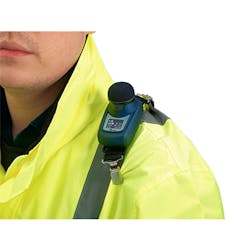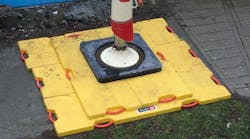OSHA has designated this week as “Safe + Sound Week,” so it’s a good time to think about preserving your employees’ hearing.
Safe + Sound Week is a nationwide event to raise awareness and understanding of the value of safety and health programs that include management leadership, worker participation, and a systematic approach to finding and fixing hazards in workplaces—and this particular hazard is excessive sound.
So how do you know if a job site or a shop is too loud?
You can equip workers and techs with a personal noise dosimeter to measure noise exposure throughout a set period of time.
Casella, a company that supplied Charles Darwin with meteorological equipment in 1830 and patented the mercury thermometer 31 years later, makes the dBadge2 personal noise dosimeter. The firm says the product offers features only previously available in advanced handheld sound-level meters.
The dBadge2 personal noise dosimeter can be worn directly on a worker’s safety clothing (see above). It’s designed for a variety of workplace noise assessments and campaigns and has Bluetooth connectivity, meaning the dosimeter can be connected to a smartphone or mobile device.
It also comes in intrinsically safe versions, so it can be used in potentially explosive areas in the oil and gas and petrochemical industries.
Managers can monitor the dosimeter remotely with the supporting Airwave App on a mobile device. There’s no need to disturb the wearer to view the status, or even to start, stop, or pause the measurement run. The dashboard display provides summary data at a glance, and it’s possible to simply tap to select an instrument for further data. Data can be emailed alongside photos and notes directly to a PC for easier reporting.
The Plus and Pro models have an audio recording option that allows the recording of voice notes for a measurement run, such as an employee’s name or task. The unit also allows the user to set parameters to trigger a recording, e.g. when a limit is exceeded, or to identify a particular event.
Octave band analysis is available as an option on the dBadge2 Pro model. It allows more information to be gathered on which to base important control measures and help choose hearing protection. Overall LEQ and LMAX values are displayed both on-screen in graphical format, as well as in a table format when downloaded.
The dBadge2 personal noise dosimeter has a “multiple simulated dosimeter” capability to display noise exposure results according to differing regional or international protocols. These simulated dosimeters simply define the measurement parameters displayed on screed, e.g. ISO, OSHA, MSHA, ACGIH setups as well as user-defined setups.
An OLED display enhances the data by color-coding screens, status, and alarms. This aids data interpretation in the field but also allows the user to define their own alarm values during which the screens will change color, giving a strong visual indicator when trigger levels have been exceeded.
Another component is a built-in motion sensor that expresses a worker’s movement as a percentage of the time that motion has been detected during a measurement run. As a result, a manager can be confident that the personal noise dosimeter has been worn for the entire shift and the data from the measurement run is valid.





